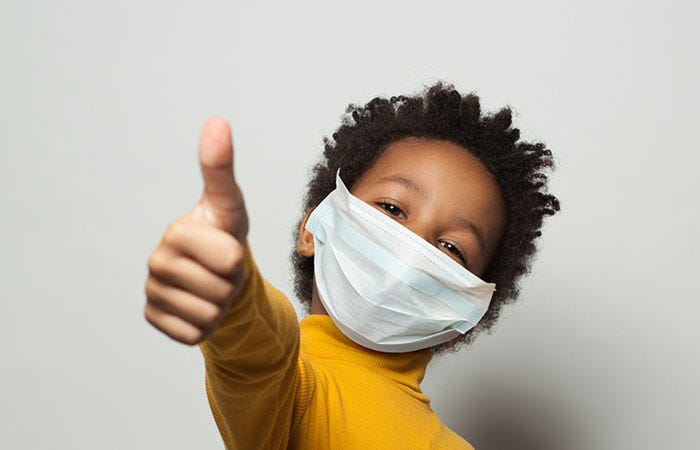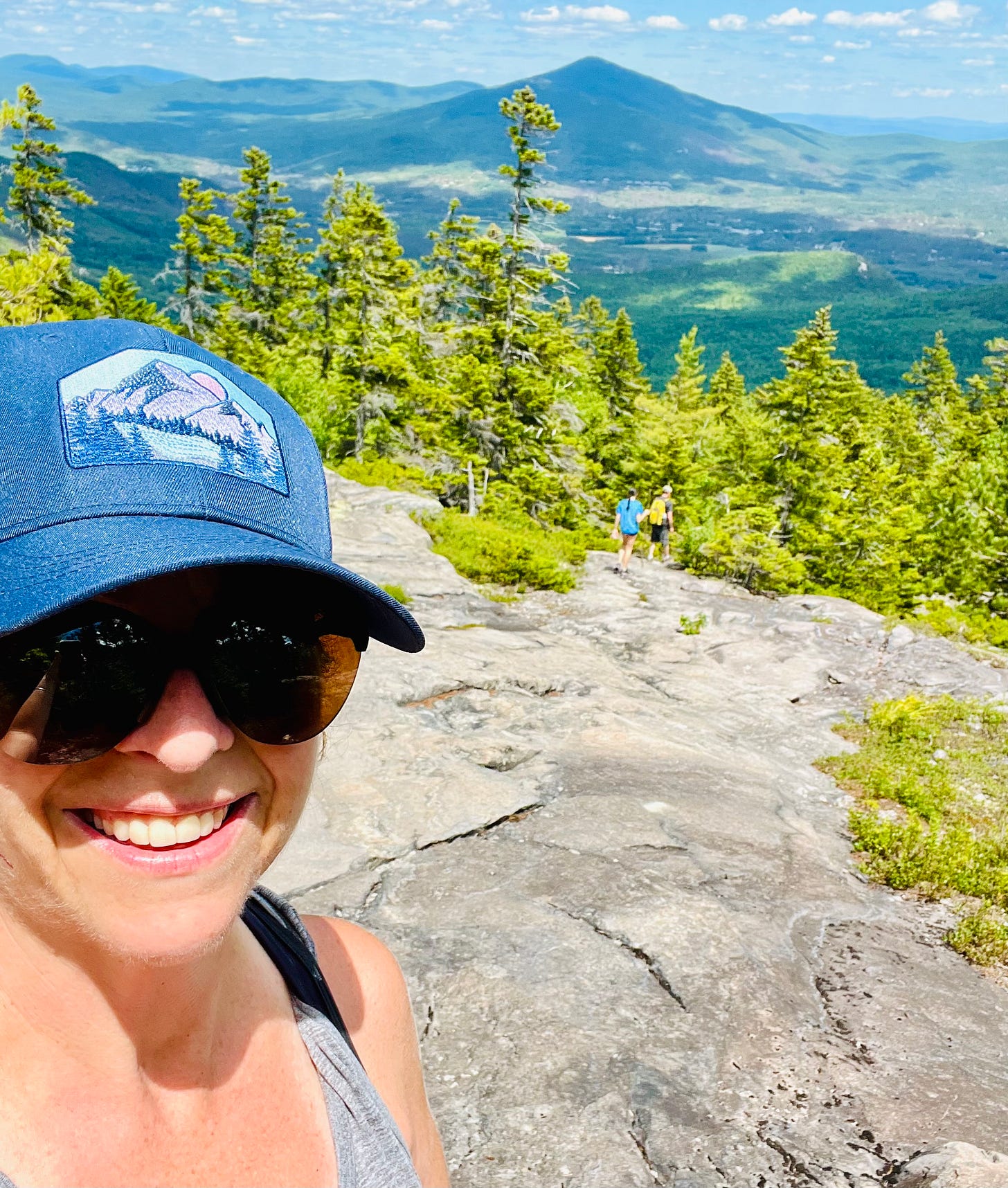Communicating Freely is a Basic Human Right
A Speech Language Pathologist's Perspective on Masking

Today marks the official end of America’s Covid-19 Public Health Emergency. It’s an anti-climactic end to over three years of mandates and restrictions. There’s no ticker tape parade or celebrating in the streets, and it’s unlikely the people who wore masks yesterday will suddenly take them off today.
But if the emergency is over, why aren’t masks coming off?
Here, sharing her unique point of view on why it isn’t over is D.C., a school based speech-language pathologist and mother of two teenagers.
Over the last three years D.C. watched students struggle and lose skills due to mask wearing and mandates.
It is a battle, not yet won.
Near the end of 2021 I had had enough with everything, especially masks, so I started writing emails. I sent emails out to anyone I could think of - the American Speech and Hearing Association (ASHA), my governor, senators, doctors, researchers, podcasters and school administrators.
I actually found it therapeutic.
I was hoping that I could help bring my perspective as a speech-language pathologist, with over 25 years experience working with children, to the critical need to return to normal and end covid mandates, especially mask wearing.
Back in February of 2022, when it was finally announced that mask mandates would stop in my neck of the woods, Southern New England, I thought that would be the end. I naively believed that everyone, even those that seemed tethered to their masks, would gradually stop wearing them and masks would go back to being worn exclusively by surgeons.
I mean, why would someone want to continue to wear such an uncomfortable item over their face if they didn’t need to?
But even after mandates ended, spring turned to summer and, while it felt like Covid was fading into the distance, the masks remained. At school I continued to see them on the faces of young children and teens. I saw young, healthy teachers continue to wear them daily. And an absurd policy, required anyone returning to school after having tested positive to wear a mask for five days, persisted. It all continued because people still believed masks must “do something.”
They were waiting to be told otherwise.
Then, in January 2023, almost three years since the start of the COVID madness, good news finally came! The Cochrane review of masks was released. I encourage everyone to check out Vinay Prasad “The Cochrane Review on Masks is Damning” for a thorough breakdown of the findings. The Cochrane Review is data-driven, minus politics or bias, and the results are in; MASKS DON’T WORK.
Period.
But even this sobering conclusion on the lack of benefit of mask wearing hasn’t seemed to matter, because those who need to hear the message still are not.
So after reading countless articles and listening to way too many podcasts that unequivocally supported the results of the Cochrane review on masking, I reached out to ASHA yet again. I was hoping that equipped with this new information, they would help to spread the great news.
Disappointingly, but not surprisingly, their messaging remains the same as 2021.
A rote reply included a link to ASHA’s COVID-19 updates which align with the CDC. An example of a recommendation that lingers is, “A well-fitting high quality face mask reduces the chance of contracting COVID-19, as well as spreading COVID-19 infection to others.”
To which I counter, there is NO data to support such a claim and in fact compelling new data that contradicts it. The Cochrane review is the gold standard for the medical community, and after an extensive review of 78 randomized controlled trials (RCTs) and cluster‐RCTs, involving 276,000 participants, the authors found that masking does nothing!
Here’s ASHA again: “The Association emphasizes health and safety first— and stresses that masks may make in-person schooling possible during the pandemic, especially at times and in areas where the infection rate is high.”
Doesn’t it sound like it was written in September 2020?
I was also provided with information from the article “Communicating Effectively While Wearing Masks,” which includes this claim: “At this time, we are not aware of any research about mask use and speech and language development.”
If only they looked!
A recent study, “Effect of face mask and noise on word recognition by children and adults,” by Anna Sfakianaki and George Kafaentzis, found “Preliminary results indicate that word identification is significantly compromised when produced with a surgical face mask, with more pronounced negative effects for children listening in noise.”
Another study out of Germany, “The impact of face masks on the recall of spoken sentences,” found face masks impede adults’ ability to recall spoken language.
I am not surprised by these findings but, prior to COVID, studies like these would not have been considered ethical because we would have logically predicted a barrier to block an individual's mouth from view, while at the same time muffling the production of their speech when communicating with others, especially children, would cause harm.
Humans need face to face communication. This is not news. “Neural Synchronization during Face-to-Face Communication,” from 2012, found face-to-face communication has important neural features that other types of communication lack, and that people should take more time to communicate face-to-face.
Wearing a mask blocks and impedes communication that we rely on, especially children. Even I struggled to interpret and hear others while both me and my communication partner were masked. This made me constantly reflect on how challenging it must be for children who don’t have the vocabulary, the experience, or the skills that an adult woman with a masters degree in speech-language pathology has to draw from.
Young kids obviously need to see their teachers' faces, especially while learning to read, developing their vocabulary skills, and reading social cues. That anxious first grader needs to see the reassuring smile from their teacher. Teenagers need to stop hiding behind a mask because they are uncomfortable with their looks or sadly still fear COVID, despite having had it multiple times and being vaccinated and boosted.
I don’t have fancy studies to back up these claims, they are just what I know, based on my years of experience working with children. Before 2020, these statements might have just been thought of as common sense.
Being able to communicate freely is a basic human right. As a speech-language pathologist, I feel obligated to fight for it.
Think of the lonely dementia patient in a nursing home being denied the ability to see their caregivers smile.
Think of the elderly man that is hard of hearing, being unable to hear and process the important medical information his doctor is sharing with him.
Think of the dyslexic first grader learning to read but unable to see the mouth of their teacher.
Think of that adolescent with Autism Spectrum Disorder that continues to wear a mask out of irrational fear.
Think of the quiet teenage girl that continues to use the mask as a shield from others.
I see this happening now and can’t understand why organizations such as ASHA continue to try to minimize the harm that masks may cause rather than sound the alarm.
We are now going on year four of masking and, even with the emergency officially over, organizations such as ASHA, the CDC, and the American Academy of Pediatrics are still not willing to change their messaging.
These organizations play a large role in the narrative on masks and it’s time to bring to light the harms and negative effects that wearing masks have, especially on children.
Are these organizations no longer on the side of what is best for public health, or of basic human rights? If not, they need to be held accountable for furthering reckless policies. I plan to continue to use my voice to speak out with the hope that more and more will too.








As volunteer in my grandkids classroom and retired teacher, I am still astounded at the number of children and young teachers still wearing masks in May 2023, particularly in low income and Asian/ black communities who definitively have not gotten the message that masks are not needed . And the urban schools talk about social Justice and equity but say nothing about the negative impact of masks!
Thank you for speaking up for children with speech disorders. My son has apraxia/dysarthria and wearing a mask caused bad habits to form right as he was making progress with his final sounds. I worry he may never get /th/ right without being prompted.